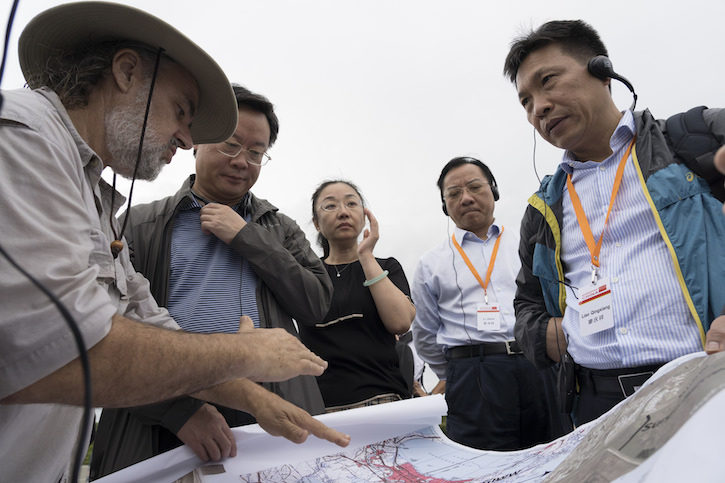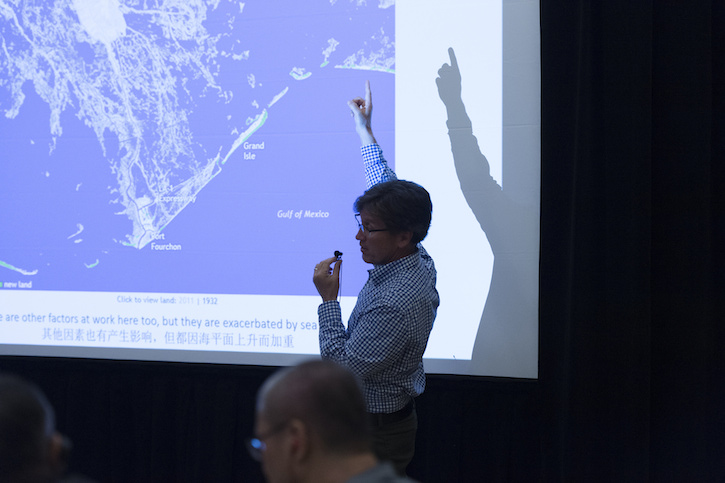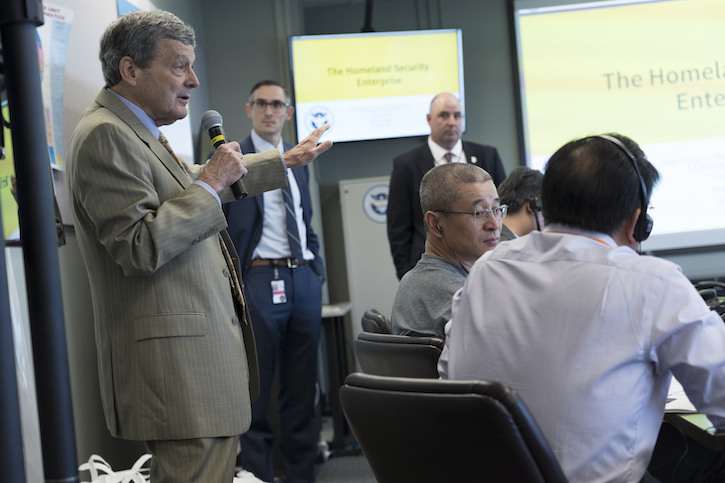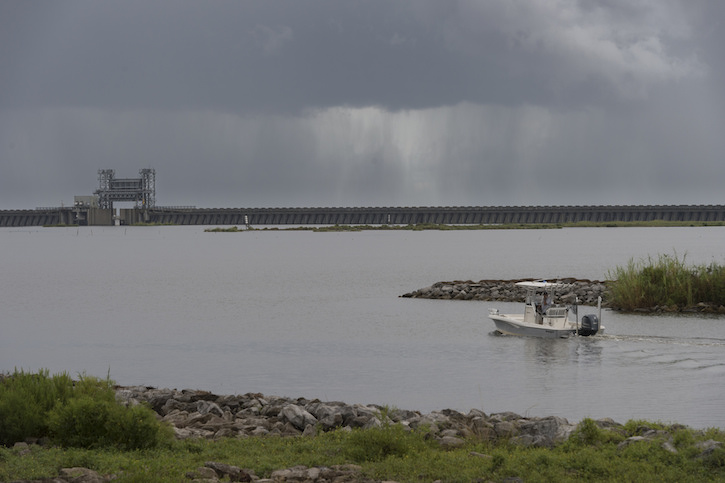
“If you were building a city today, you would not build it where New Orleans was built,” explained Col. Terry Ebbert, Director of Public Safety and Homeland Security for the City of New Orleans. He was speaking to a delegation of municipal leaders visiting from China’s coastal Guangdong province as part of the Paulson Institute’s Mayors Training Program. “Most of New Orleans is below sea level.”
Ebbert should know, after all, since he oversaw New Orleans’ public safety response to Hurricane Katrina in 2005, one of the most destructive and costly natural disasters in U.S. history. His point illustrated one of the city’s distinguishing characteristics: finding innovative solutions to urban challenges, especially those related to the region’s natural environment. New Orleans’ experience with coastline protection, natural disaster response, and managing a unique cultural heritage placed it at the top of the Guangdong delegation’s list of cities to study.
Guangdong province, with roughly 2,700 miles of coastline—nearly one-third of China’s total coastline—has faced some of the same marine environmental challenges that New Orleans is working to address, including erosion, extreme weather, wetlands loss, and potential sea-level rise due to climate change.

The economic implications of protecting the Louisiana coastline are considerable. Louisiana is one of the largest seafood-producing states in the United States, with annual sales approaching $2 billion. One coastline protection initiative, led by The Nature Conservancy (TNC), utilizes six miles of oyster reefs to improve water quality and wildlife habitats and reduce wave energy that leads to erosion, all for less cost than artificial reefs. TNC Coastal Program Director Seth Blitch told the delegation that oysters are “ecosystem engineers” that can serve as natural protection for urban coastlines. New Orleans also uses human engineering and construction in coastal protection. The delegation toured the 1.8-mile-long, 26-foot-tall surge barrier constructed after Hurricane Katrina to defend against future storm surge from the waterways surrounding New Orleans.

At Ebbert’s New Orleans Office of Homeland Security and Emergency Preparedness, the Guangdong delegation learned about the “NOLA Ready” emergency preparation and response program, which includes a plan for ensuring the safety of each New Orleans citizen in case of natural disaster or other emergency. The relevance of this session to the delegation could not be overstated as Typhoon Mangkhut was making landfall in Guangdong that week, resulting in initial damages exceeding $600 million. Workshop speakers emphasized the economic case for good emergency preparedness, noting that each dollar spent on planning and hazard mitigation ultimately saves six dollars in recovery costs. The economics of smart urban emergency planning resonated with the delegation.
The delegation also examined the contribution of New Orleans’ historic cultural identity to the local economy, especially relevant as Guangdong’s second- and third-tier cities are looking for ways to distinguish themselves in order to draw tourism traffic and investment. The delegation studied New Orleans’ cultural characteristics to learn how the city differentiated itself from others in the U.S., noting the interplay of unique architecture, entertainment, food, and art. New Orleans showed the delegation that a city could succeed by embracing a distinctive cultural identity.

The city of New Orleans offered the Mayors Training Program delegation the opportunity to study innovative solutions to urban development challenges. From the city’s cultural heritage to its coastal protection and emergency planning, New Orleans provided a range of economically sound urban planning insights that delegates could take back to implement in their home cities across Guangdong province. New Orleans has remained resilient and thriving by finding creative and sustainable ways to manage risk—a practical approach that resonated with the Guangdong delegation.


